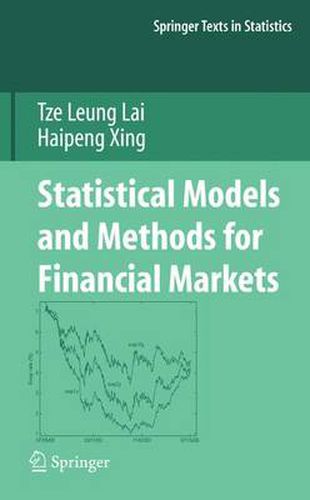Readings Newsletter
Become a Readings Member to make your shopping experience even easier.
Sign in or sign up for free!
You’re not far away from qualifying for FREE standard shipping within Australia
You’ve qualified for FREE standard shipping within Australia
The cart is loading…






This title is printed to order. This book may have been self-published. If so, we cannot guarantee the quality of the content. In the main most books will have gone through the editing process however some may not. We therefore suggest that you be aware of this before ordering this book. If in doubt check either the author or publisher’s details as we are unable to accept any returns unless they are faulty. Please contact us if you have any questions.
The idea of writing this bookarosein 2000when the ?rst author wasassigned to teach the required course STATS 240 (Statistical Methods in Finance) in the new M. S. program in ?nancial mathematics at Stanford, which is an interdisciplinary program that aims to provide a master’s-level education in applied mathematics, statistics, computing, ?nance, and economics. Students in the programhad di?erent backgroundsin statistics. Some had only taken a basic course in statistical inference, while others had taken a broad spectrum of M. S. - and Ph. D. -level statistics courses. On the other hand, all of them had already taken required core courses in investment theory and derivative pricing, and STATS 240 was supposed to link the theory and pricing formulas to real-world data and pricing or investment strategies. Besides students in theprogram,thecoursealso attractedmanystudentsfromother departments in the university, further increasing the heterogeneity of students, as many of them had a strong background in mathematical and statistical modeling from the mathematical, physical, and engineering sciences but no previous experience in ?nance. To address the diversity in background but common strong interest in the subject and in a potential career as a quant in the ?nancialindustry,thecoursematerialwascarefullychosennotonlytopresent basic statistical methods of importance to quantitative ?nance but also to summarize domain knowledge in ?nance and show how it can be combined with statistical modeling in ?nancial analysis and decision making. The course material evolved over the years, especially after the second author helped as the head TA during the years 2004 and 2005.
$9.00 standard shipping within Australia
FREE standard shipping within Australia for orders over $100.00
Express & International shipping calculated at checkout
This title is printed to order. This book may have been self-published. If so, we cannot guarantee the quality of the content. In the main most books will have gone through the editing process however some may not. We therefore suggest that you be aware of this before ordering this book. If in doubt check either the author or publisher’s details as we are unable to accept any returns unless they are faulty. Please contact us if you have any questions.
The idea of writing this bookarosein 2000when the ?rst author wasassigned to teach the required course STATS 240 (Statistical Methods in Finance) in the new M. S. program in ?nancial mathematics at Stanford, which is an interdisciplinary program that aims to provide a master’s-level education in applied mathematics, statistics, computing, ?nance, and economics. Students in the programhad di?erent backgroundsin statistics. Some had only taken a basic course in statistical inference, while others had taken a broad spectrum of M. S. - and Ph. D. -level statistics courses. On the other hand, all of them had already taken required core courses in investment theory and derivative pricing, and STATS 240 was supposed to link the theory and pricing formulas to real-world data and pricing or investment strategies. Besides students in theprogram,thecoursealso attractedmanystudentsfromother departments in the university, further increasing the heterogeneity of students, as many of them had a strong background in mathematical and statistical modeling from the mathematical, physical, and engineering sciences but no previous experience in ?nance. To address the diversity in background but common strong interest in the subject and in a potential career as a quant in the ?nancialindustry,thecoursematerialwascarefullychosennotonlytopresent basic statistical methods of importance to quantitative ?nance but also to summarize domain knowledge in ?nance and show how it can be combined with statistical modeling in ?nancial analysis and decision making. The course material evolved over the years, especially after the second author helped as the head TA during the years 2004 and 2005.